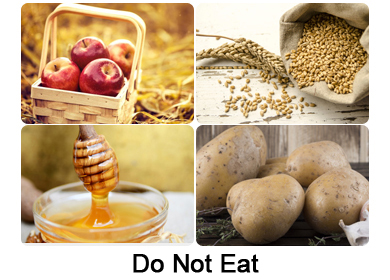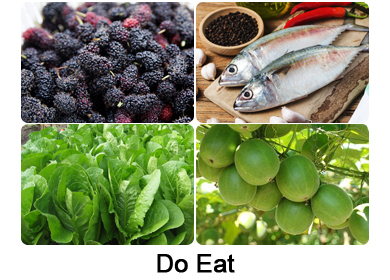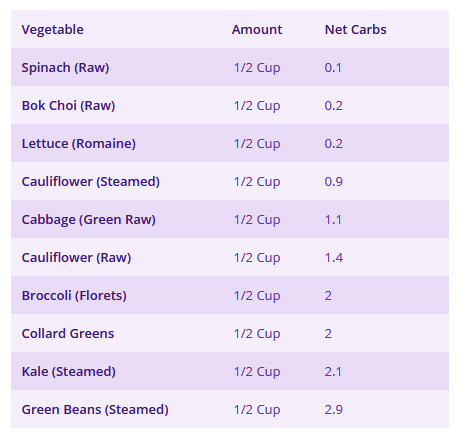Are you worried about your health and planning to maintain any specific kind of diet plan? Are you a little bit puzzled while picking up the right diet plan? If the answer is yes, then you are now in the right place to solve all of your doubts regarding the same. Here, we are going to discuss the ketogenic diet for beginners which have already showcased a lot of benefits including weight loss.
What is Ketogenic Diet?
A ketogenic diet is nothing but a low carb diet-plan which forces the body to supply energy by producing the ketone body in the liver. This diet plan is also addressed by some other names which include ‘Low carb high-fat diet’ (LCHF), ‘keto diet’ and ‘low carb diet’ etc.
To start a keto diet, you may wish to plan ahead. That means having a viable diet arrange prepared and waiting. What you eat depends on how fast you wish to induce into a ketogenic state. The additional restrictive you’re on your carbohydrates (less than 15g per day), the quicker you may enter ketosis.
You want to stay your carbohydrates limited, coming largely from vegetables, nuts, and dairy. Don’t eat any refined carbohydrates like wheat (bread, pasta, cereals), starch (potatoes, beans, legumes) or fruit. The small exceptions to this are avocado, star fruit, and berries which can be consumed in moderation.
Do Not Eat
- Grains – Wheat, Corn, Rice, Cereal, etc.
- Sugar – Honey, Agave, Maple Syrup, etc.
- Fruits – Apples, Bananas, Oranges, etc.
- Tubers – Potato, Yams, etc.

Do Eat
- Meats – Fish, Beef, Lamb, Poultry, Eggs, etc.
- Leafy Greens – Spinach, Kale, etc.
- Above Ground Vegetables – Broccoli, Cauliflower, etc.
- High Fat Dairy – Hard Cheeses, High Fat Cream, Butter, etc.
- Nuts and Seeds – Macadamias, Walnuts, Sunflower Seeds, etc.
- Avocado and Berries – Raspberries, Blackberries, and Other Low Glycemic Impact Berries.
- Sweeteners – Stevia, Erythritol, Monk fruit, and other Low-Carb Sweeteners.
- Other Fats – Coconut Oil, High-Fat Salad dressing, Saturated fats, etc.

Vegetables on a Ketogenic Diet
Dark green and leafy is always the best choice for vegetables. Most of your meals should be a protein with vegetables, and an extra side of fat. Chicken breast basted in olive oil, with broccoli and cheese. Steak topped with a knob of butter, and a side of spinach sauteed in olive oil.
If you’re still confused about what a net carb is, don’t worry – I’ll explain further. Let’s say for example you want to eat some broccoli (1 cup) – seriously my favorite and most delicious vegetable out there.
There are a total of 6g carbohydrates in 1 cup.
There’s also 2g of fiber in 1 cup.
So, we take the 6g (total carbs) and subtract the 2g (dietary fiber).
This will give us our net carbs of 4g.
Here’s a list of the most common low carb vegetables. Though if you want a complete list, check out our guide on the best vegetables for a ketogenic diet.

How does it Work?
A person who undergoes a keto diet mainly controls the intake of the food which in turn lowers the glucose level in the blood. Though glucose acts as the main supplier of energy in the absence of adequate amount of glucose, the human body is forced to produce energy by the breakdown of the ketone body which occurs in the liver. The ketone body is the main constituent of fat thus breaking down of the ketone body helps in the fat loss. Therefore, the persons not only experience weight loss but also healthier life too.
How to Reach Ketosis
Achieving ketosis is a pretty straightforward, but it can seem complicated and confusing with all of the information out there. Simply check out the below levels of importance.
- Restrict Your Carbohydrates: Most people tend to only focus only on net carbs. If you want great results, limit both. Try to stay below 20g net carbs and below 35g total carbs per day.
- Drink Water: Try to drink a gallon of water a day. Make sure that you’re hydrating and staying consistent with the amount of water you drink. It not only helps regulate many vital bodily functions, but it also helps control hunger levels.
- Stop Worrying about Fat: Fat is the primary source of energy on keto – so make sure you’re feeding your body enough of it. You do not lose weight on keto through starvation.
- Restrict Your Protein Intake: Many people come over to keto from an Atkins diet and don’t limit their protein. Too much protein can lead to lower levels of ketosis. Ideally for weight loss, you want to eat between 0.6g and 0.8g protein per pound lean body mass.
- Start Fasting: Fasting can be a great tool to boost ketone levels consistently throughout the day.
- Stop Snacking: Weight loss tends to do better when you have fewer insulin spikes during the day. Unnecessary snacking may lead to stalls or slow in weight loss.
- Add Exercise In: It’s a known fact that exercise is healthy. If you want to get the most out of your ketogenic diet, consider adding in 20-30 minutes of exercise a day. Even just a small walk can help regulate weight loss and blood sugar levels.
Types of Keto Diet:
We can classify keto diets mainly in 4 types:
- Standard Ketogenic Diet (SKD): In this type of keto diet, a person is required to eat 20 to 50 grams for a day. Being the simplest of all kinds of keto diet form, the exact amount of food intake varies from person to person.
- Targeted Ketogenic Diet (TKD): Being quite specialized in nature, in this diet form a person should eat carbs just before 30 to 60minutes of doing exercise. Though particular preference to the easily digestible carbs having the higher level of the glycaemic index is given, one should avoid carbs which have high fructose content. Food substances containing high protein and low fat are recommended to be treated as a post-exercise carb.
- Cyclic Ketogenic Diet: This kind of ketogenic diet refers to the cyclic process of changing the quantity of carb intake. A person maintaining this kind of diet requires 40 to 50 grams of carb in the days of 1st phase whereas the carb-loading phase requires 450-500 grams of carb intake which varies from person to person.
- Restricted Ketogenic Diet: This type of ketogenic diet is mainly considered as beneficial for treating cancer. In this case, the carb intake is limited to below 20grams in order to make the blood sugar level 55-65 mg/dl. Due to the absence of adequate glucose, the normal cells of the body start producing ketone body in order to generate energy whereas the cancer cells failed to do the same. This results in the death of the cancerous cells.
Benefits of Keto Diet:
Just like several other dieting methods, the low carb diet has also some unique advantages which may astonish you. Let’s have a quick view of those benefits in the following:
- Weight Loss: Being a diet with controlled carb intake, it helps a lot in weight loss. You will never feel hungry due to the high amount of protein intake.
- Reduction of Acne: Recent researchers assume that formation of acne is quite influenced by the diet as well as blood sugar level. As alteration of bacteria present in gut and fluctuations of blood sugar level may affect the health of skin that’s why following ketogenic diet may suppress several factors related to the formation of acne.
- Prevents Cancer: By lowering the blood sugar level, keto diet may reduce several kinds of complications related to insulin. Being almost a substitute treatment of chemotherapy, the keto diet leaves a negative effect on cancerous cells; therefore, chances of being affected by cancer get lowered.
- Improvement of Cardiac Health: Some studies suggest that the keto diet significantly reduces LDL whereas elevates the level of HDL in the blood. Therefore this diet prevents a person from several complications arising from the higher level of bad cholesterol i.e. LDL.
- Enhances the Health of Brain: The keto diet has a high impact on the brain health, therefore, it acts as a preventive for the neuro-disorders like Alzheimer’s disease, Parkinson’s disease etc.
